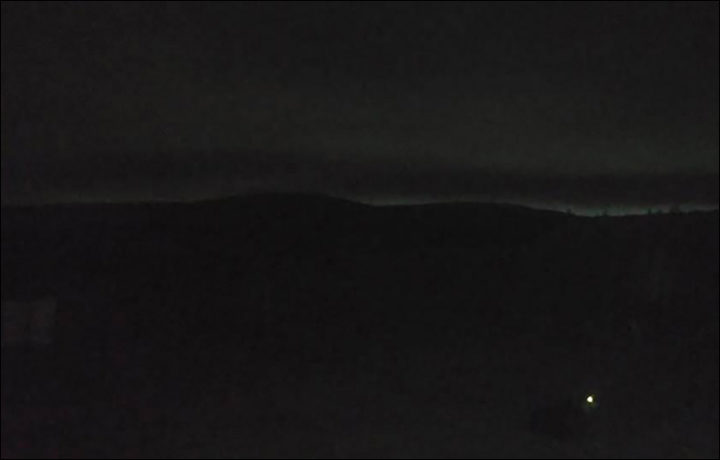
Almost exactly a year ago - in July 2018 - there was another pitch black morning over three major areas of Yakutia, Eveno-Bytantaisky, Zhigansky and the same Verkhoyansky district.
Darkness which had a yellow tinge lasted for over three hours and was followed by drop in air temperature.
The territory impacted by the gloom was larger than Italy.
This time weather experts thought the blackout was caused by smoke from wildfires mixing with heavy rain clouds, and they didn't register change in temperature.
The timing of the returning black skies puzzled the locals.
Residents of sub-Arctic Verkhoyansk district of Yakutia woke up in complete darkness
'Is that becoming a weird tradition that every August or July we wake up, panicking, because there the Sun is off again?!', said a resident of the town of Verkhoyansk.
It was a high amount of carbon monoxide in the air that sped up and intensified the process of clouds formation, said chief specialist of Fobos weather station Yevgeny Tishkovets.
'This situation can be compared to what is happening during cloud spiking which is done to cause rain. The cloud cover was as thick as it can possibly be, add to this the wildfires smoke and precipitation. This is still, of course, rather approximate and we need to analyse what happened in a lot more details', he said on Yakutia-24 TV channel.
The Fobos weather centre shared two maps, one showing extremely high amounts of carbon monoxide (7,19mg/m3 while the allowed maximum is 5mg/m3) in the air, and another one confirming very high level of cloudiness.

It was a high amount of carbon monoxide in the air that sped up and intensified the process of clouds formation, said chief specialist of Fobos weather station Yevgeny Tishkovets




Reader Comments
to our Newsletter